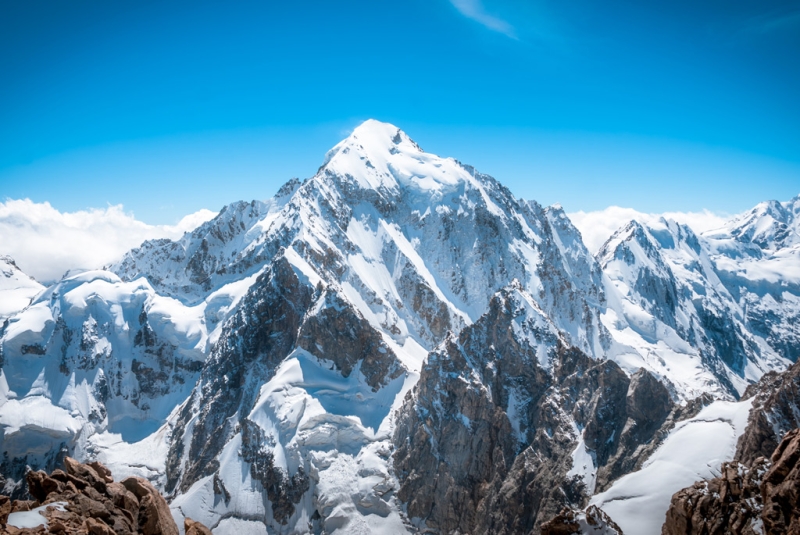
Everest (Chomolungma) is the highest mountain peak on the planet (on the map). It is located in the Himalayas on the Mahalangur Himal range. The shape of the mountain resembles a triangular pyramid. The southern peak of Everest has a height of 8,760 meters and is located on the border of Nepal (Sagarmatha National Park) and the Chinese part of Tibet, the northern peak with a height of 8,848 meters is located in China. The southern slope of Chomolungma is so steep that snow cannot be held on it. On all sides the mountain range is covered with glaciers, ending at an altitude of 5 kilometers.
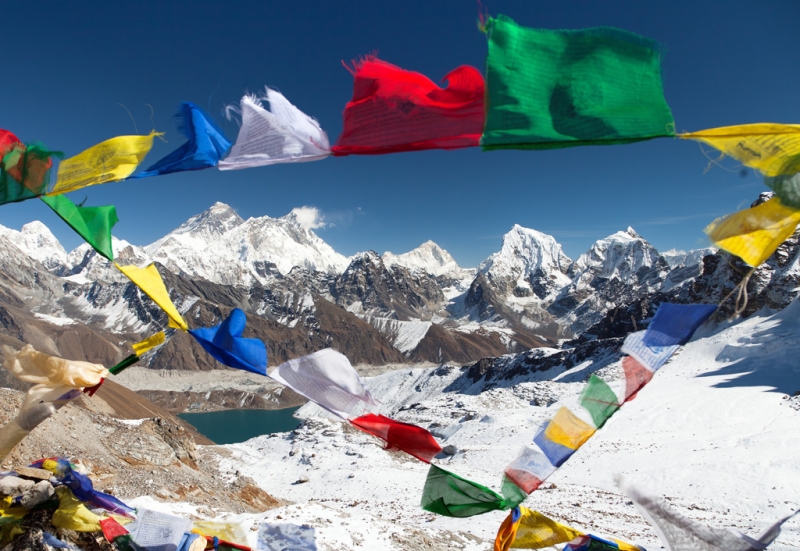
The climatic conditions in the Everest region are extremely harsh. Apart from the winds, whose speed reaches 55 meters per second, those wishing to conquer the mountain peak will encounter low air temperatures on their way. In winter, it can drop to minus 60°C, and in the warmest summer month (July) the air warms up to 0 degrees at best.
It would seem that in summer conditions on Everest are quite tolerable, but do not forget that at this time monsoon winds rage, bringing with them huge amounts of precipitation. Summer snow storms on Everest can be so severe that even experienced climbers cannot continue their climb.
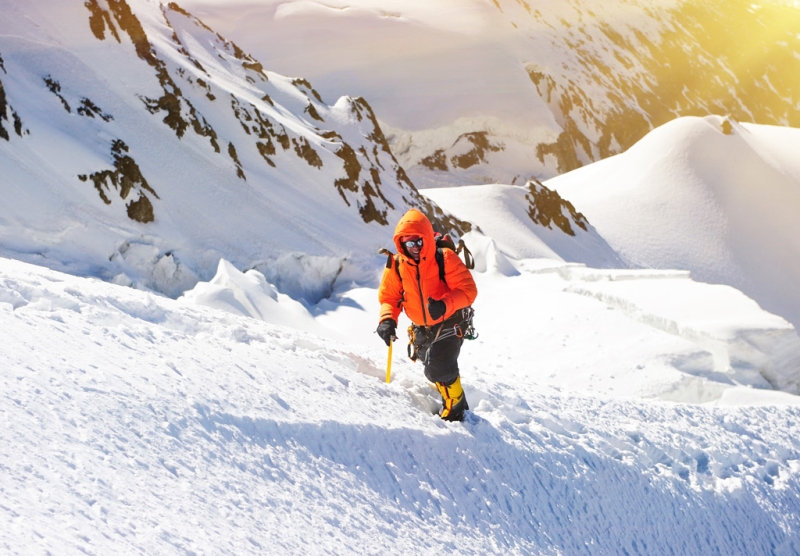
How long does it take to climb Everest?
Before you set off to conquer Everest, carefully weigh your strengths and capabilities. It will take you quite a lot of time to climb. Expeditions for non-professional athletes are organized in May – the safest month in terms of climatic conditions. In total, the ascent to Everest will take about two months, and taking into account the route to Base Camp and possible unforeseen situations, the total duration of the trip can be over three and a half months.
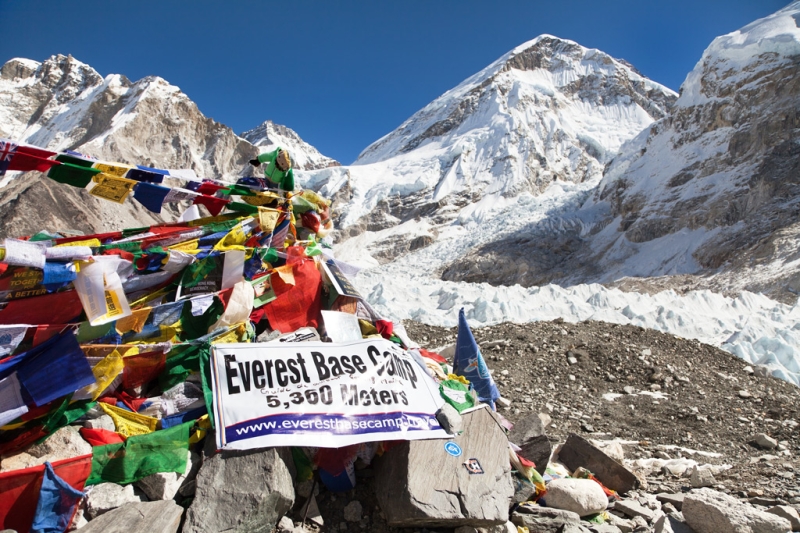
How to get to the base camp?
If you are not an experienced climber with dozens of conquered peaks under your belt, you may want to limit yourself to climbing only to the base camp, located at an altitude of 5300 meters. Such a trip is quite safe and the cost is much cheaper than a full climb to the top of the mountain. However, most people aspiring to Everest want, if not to reach the very top, then to move as far as possible. Unfortunately, no one can give you an absolute guarantee of getting to the top due to the climatic factors described above and other circumstances due to which the expedition may be interrupted.
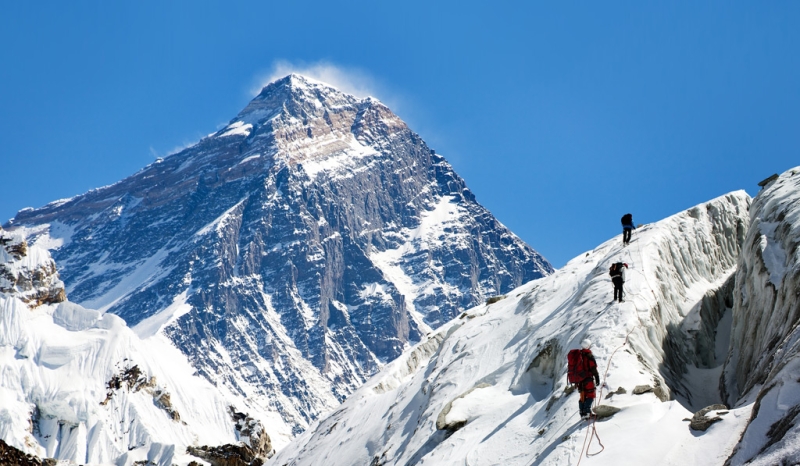
Any expedition to Everest begins with trekking to base camp. There are two such camps in total. One of them (Northern) is located on the territory of China in Tibet, the second (Southern) is in Nepal. In order to get to the Northern Camp, you will need permission from the Chinese government, which is very difficult and quite expensive to obtain. Therefore, the vast majority of travelers prefer to start climbing Everest from the Southern Base Camp. You can get there in 11-14 days. The journey will begin with a flight to the capital of Nepal – Kathmandu, from there the group is taken to Luklu by a small plane (the flight takes about 40 minutes). The remaining 50 kilometers to Base Camp will have to be walked. Tourist groups travel 4-5 hours a day and complete the entire route in approximately 9-10 days, depending on preparation and weather conditions.
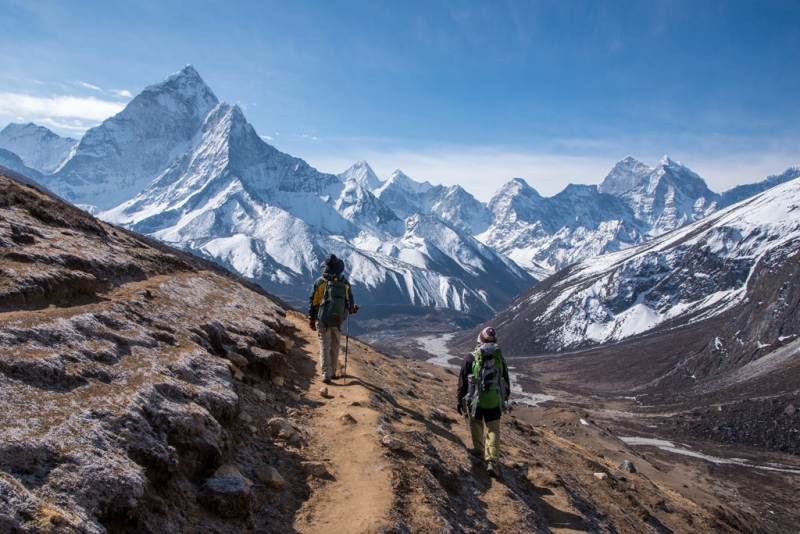
How to climb Everest?
So, you got to Kathmandu, and from there to the South Base Camp. Let us remind you that this route will take about two weeks. A logical question from many tourists is: why does a route only 50 kilometers long take about 10 days? This is due to the fact that the base parking lot is located at an altitude of more than 5300 meters, and the beginning of the route is at an altitude of just over 2000 meters. In order to prevent health problems, the ascent to altitude should occur gradually so that the body acclimatizes and gets used to life in conditions of lack of oxygen. Just think, on the top of Everest, in order to take just one step, a person has to take up to 15 breaths. Of course, on the trek to the base camp the conditions are not so severe, but you shouldn’t neglect safety rules either.
To undergo adaptation, groups make acclimatization stops lasting 1-2 days for every thousand meters of ascent. It is recommended to drink plenty of water and carefully listen to the body’s reaction. It is always better to go back for a while than to overcome yourself and end up not achieving your goal.
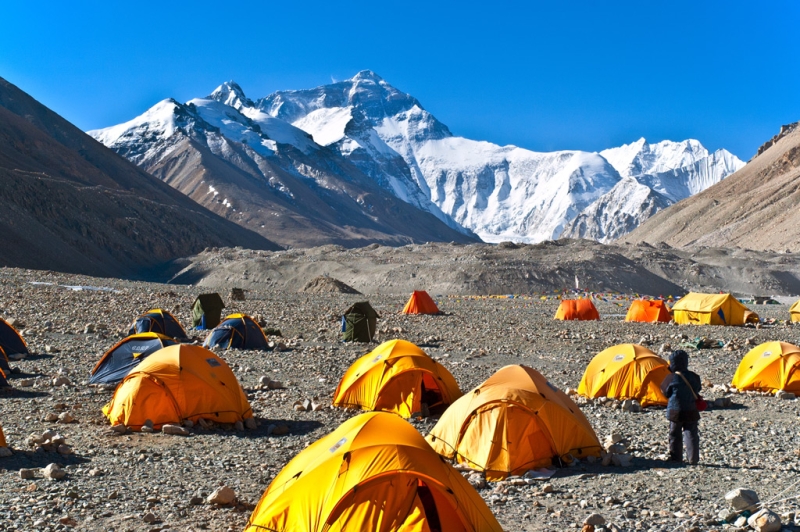
Those who want to go to the end will spend about a month in the base camp, during which the necessary equipment will be prepared and checked, groups will be formed, and the body will undergo adaptation to mountain conditions.
The ascent to the mountain peak takes place in stages, with stops at high-altitude camps located at 5800 meters, 7000 meters, 7800 meters and 8300 meters. Moreover, having risen to a certain altitude, the group returns to a lower elevation for the night, since spending the night at the maximum altitude for the day is very dangerous for health.
In addition to the most experienced guides, the group is accompanied along the way by representatives of the indigenous population – Sherpas. They perform essential functions: they help carry equipment, fasten ropes and perform other work that even trained athletes cannot do.
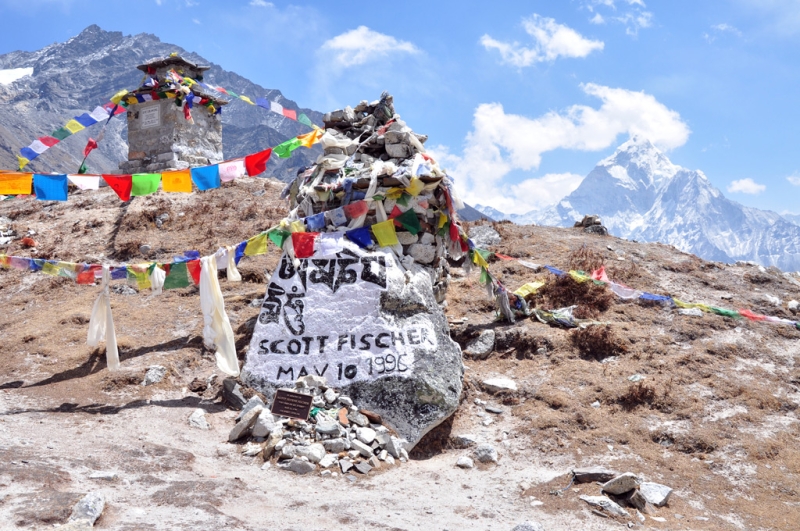
It is worth noting that the ascent to the highest point of the mountain from 7900 meters is not always possible, since there is a so-called “death zone” from where the bodies of dead climbers are not even evacuated. You can only breathe here with the help of an oxygen mask, and every step, without exaggeration, is given with great difficulty. If the group still gets to the top, after 20 minutes it will have to return so as not to add to the sad lists of those killed on Everest.
In addition to the lack of oxygen, other dangers await those who want to conquer Everest. The main one is avalanches, which always occur suddenly and have already claimed many lives. There is no protection from this phenomenon, and, as a rule, only a few manage to escape.
Another common cause of death for tourists is the harsh climate. Even experienced climbers found themselves victims of snow storms and low temperatures.
Equipment malfunction is another reason why people die on Everest. Loss of insurance, breakdown of oxygen equipment – all this can lead to the most dire consequences.
Remember that climbing to the top of Everest is not just a tourist route, but a risky and dangerous undertaking that requires serious preparation. During the two months that the ascent will last, you will live in the most extreme conditions. Not everyone can do this.

How much does it cost to climb Everest?
Let us note right away that climbing Everest is one of the most expensive tourist activities. The average cost of a trip is at least 55-70 thousand US dollars, depending on how it is carried out: independently or as part of a commercial group. The second option will be slightly cheaper.
The main costs when climbing in a group will be the following amounts:
- $8,000-15,000 – transportation and related expenses (flight to Nepal and back, flight from Kathmandu to Lukla and back, vaccinations, payment for hotels and meals);
- 2,000-3,000 dollars – transition to the base camp, which includes transportation of goods, food, payment for passage through the National Park;
- Climbing Everest will cost $20,000-25,000 and includes expenses for the services of a liaison officer and doctors, wages for guides and Sherpas, a climbing permit ($11,000 per person),
environmental fee ($4000),
developing a route, tracking the weather forecast and other necessary expenses;
- Parking in high-altitude camps – 4,000-8,000 dollars (food, maintenance, equipment check);
- Equipment – $3,000-15,000 (oxygen masks, tents, climbing equipment, first aid kit, etc.).
In addition to the above, you should take into account unforeseen expenses and additional services that may be required during the ascent. These include:
- Urgent evacuation by helicopter – from $100 at low altitudes to $20,000 at high altitudes;
- Communication services – from 1000 dollars;
- Flag installation – from $2,200 per 1 sq. meter of canvas;
- Tips – up to 2000 dollars.
Mostly Russian companies offer tours to the Southern Base Camp and back. For example, such services are offered:
- Alpindustria Company.
- “Himalayan glacier.”
- Kailash Center and many others.
Climbing to the top of the mountain will require careful preparation, and associations of professional mountaineers in Russia and abroad can help you with this.
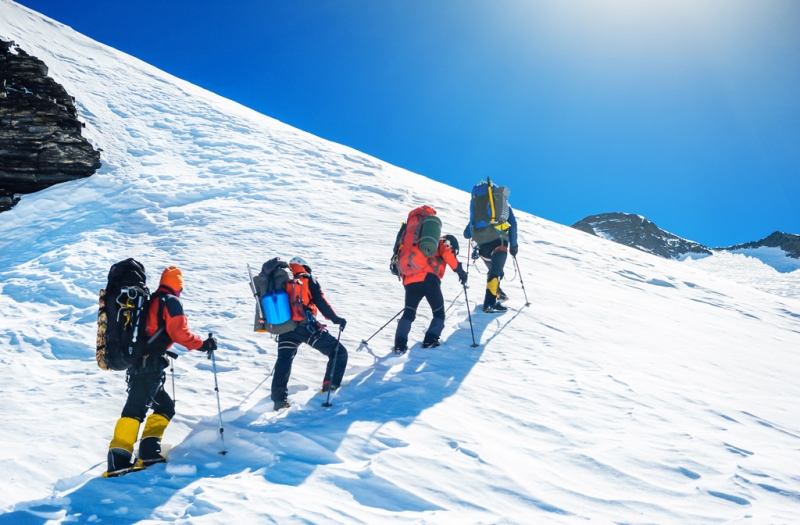
Requirements for those who want to climb Everest
The main requirement is the availability of free time and financial resources. Naturally, to fully climb the highest mountain on the planet you will need excellent health, reliable equipment and mountaineering experience. Without any of these components, you can try to climb, but only at your own peril and risk. In any case, before starting the route, you will sign a paper stating that only you are responsible for yourself and in the event of an accident, you and your family will not have any claims against the organizers of the ascent.
As for equipment, not everyone has a full set of professional high-altitude equipment. It is not necessary to purchase it; it is enough to agree on a lease. This should be done in advance so that it doesn’t turn out that the Base Camp can’t help you with anything.
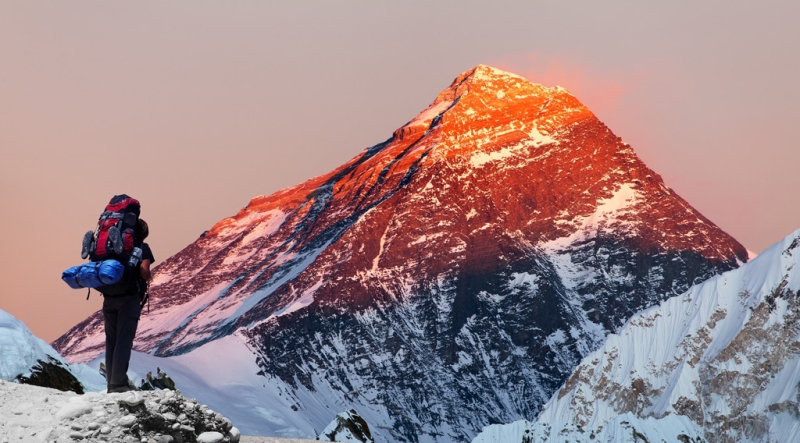
Conquering Everest is the dream of many, but not everyone succeeds in fulfilling it. The mysterious and harsh peak of the world, where, according to the legends of local residents, gods live, is conquered only by the most resilient and courageous, ready to overcome not only nature, but also themselves.

